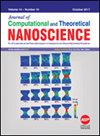Development of a Digilog Learning Model for Training on the Principles of Artificial Intelligence Learning in Elementary Education
Q3 Chemistry
Journal of Computational and Theoretical Nanoscience
Pub Date : 2021-05-01
DOI:10.1166/jctn.2021.9625
引用次数: 0
Abstract
The importance of nurturing human resources who will lead the 4th Industrial Revolution is increasing, and artificial intelligence is a core factor of innovative technologies. Therefore, developing various and interesting teaching methods for principles of artificial intelligence is necessary. This article suggests teaching principles of artificial intelligence by convergence of digital and analogue, called digilog. Students get to know how machines can learn and operate, which is digital, with paper worksheets and several physical teaching aids, which are analogue. In digilog way, students figure out the principles of image recognition. There are two methods, MAX and filtration box. The principles of artificial intelligence are too abstract to understand for elementary learners who are yet at concrete operational period, according to Piaget. Therefore, the convergence of digital and analogue is effective for teaching and learning about artificial intelligence in elementary education. Elementary learners examine colorful virtual images in their worksheet and use their hands and pencils to trace artificial intelligence’s work. They end up with figuring out how artificial intelligence compresses inserted images into smaller reference images step by step. With the offered method and developing more diverse digilog elements, elementary learners’ knowledge and experiences necessary for the future society will be increased.基础教育中人工智能学习原理训练的Digilog学习模型的开发
培养引领第四次产业革命的人才的重要性日益增加,人工智能是创新技术的核心要素。因此,开发各种有趣的人工智能原理教学方法是必要的。本文提出了数字与模拟相结合的人工智能教学原理,称为数字逻辑。学生们了解机器是如何学习和操作的,这是数字化的,有纸质的工作表和一些物理教学辅助工具,这是模拟的。通过数字化的方式,让学生了解图像识别的原理。有MAX和过滤箱两种方法。根据皮亚杰的说法,人工智能的原理过于抽象,对于还处于具体操作阶段的小学生来说,很难理解。因此,数字与模拟的融合对于基础教育中人工智能的教与学是有效的。初级学习者在他们的工作表中检查彩色虚拟图像,并使用他们的手和铅笔来跟踪人工智能的工作。他们最终弄清楚人工智能是如何一步一步地将插入的图像压缩成更小的参考图像的。通过提供的方法和开发更多样化的数字化元素,初级学习者的知识和经验将会增加,以适应未来社会的需要。
本文章由计算机程序翻译,如有差异,请以英文原文为准。
求助全文
约1分钟内获得全文
求助全文
来源期刊

Journal of Computational and Theoretical Nanoscience
工程技术-材料科学:综合
自引率
0.00%
发文量
0
审稿时长
3.9 months
期刊介绍:
Information not localized
 求助内容:
求助内容: 应助结果提醒方式:
应助结果提醒方式:


